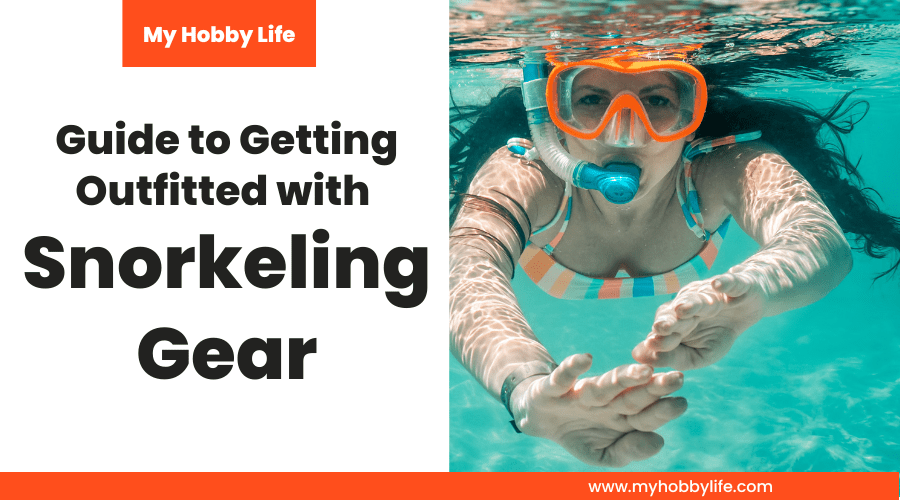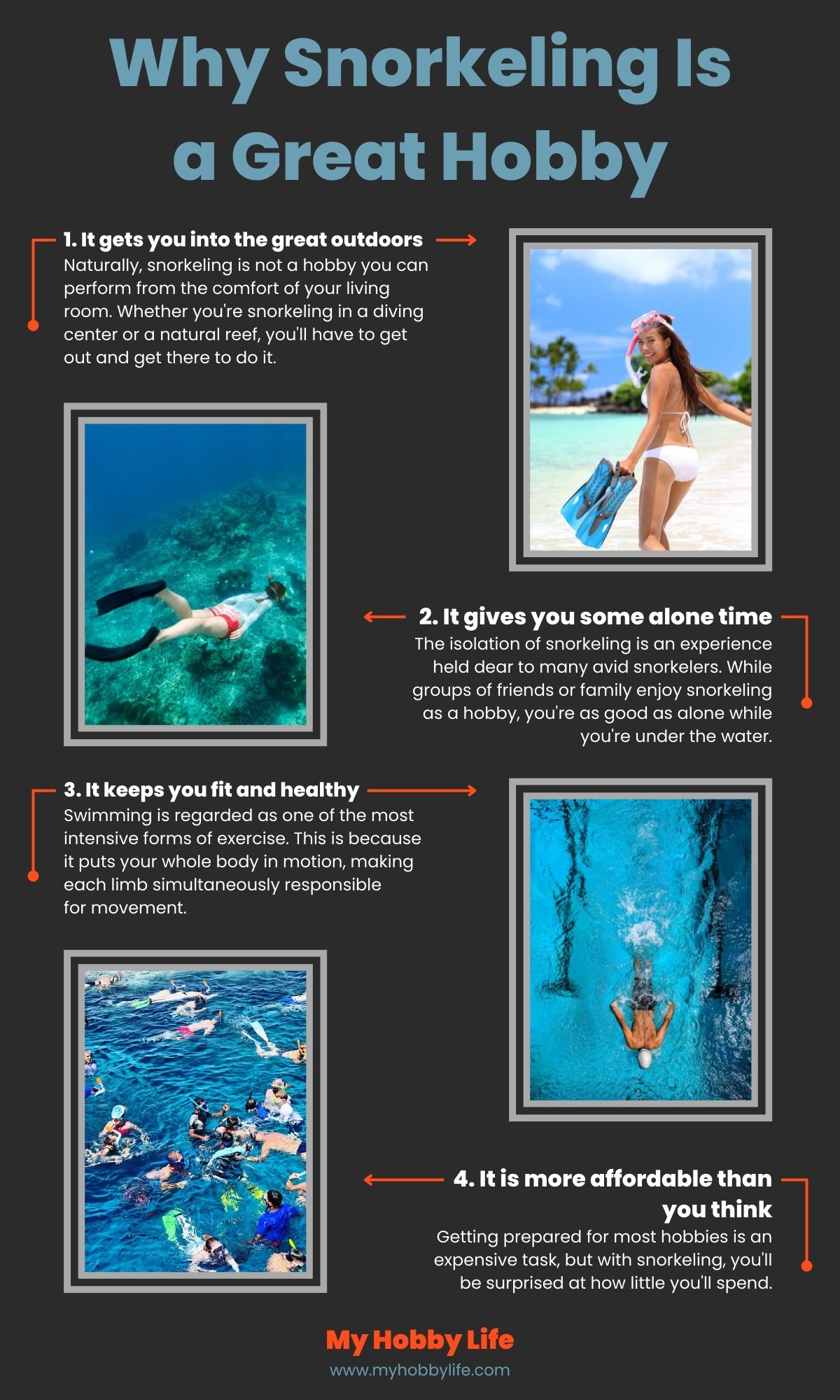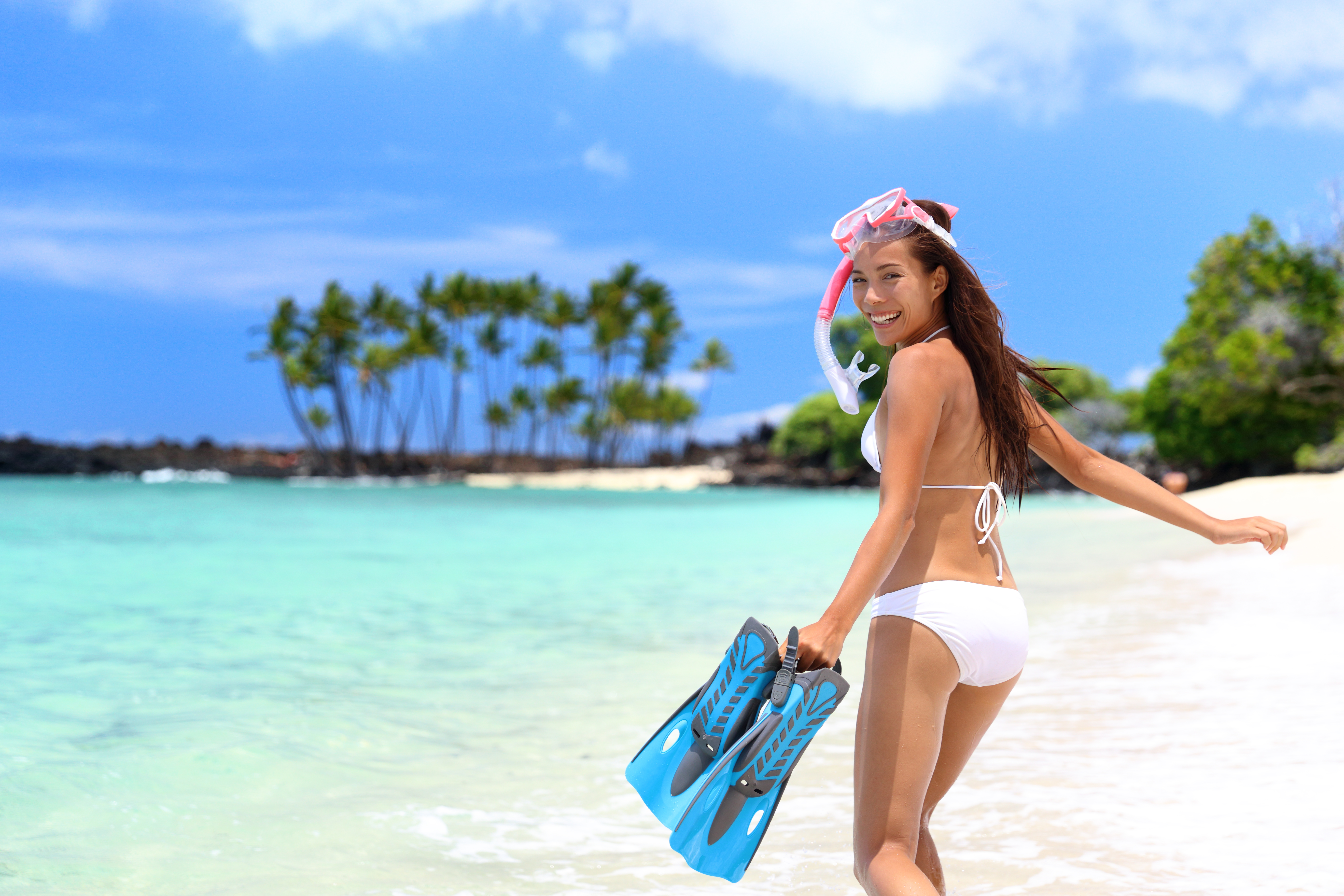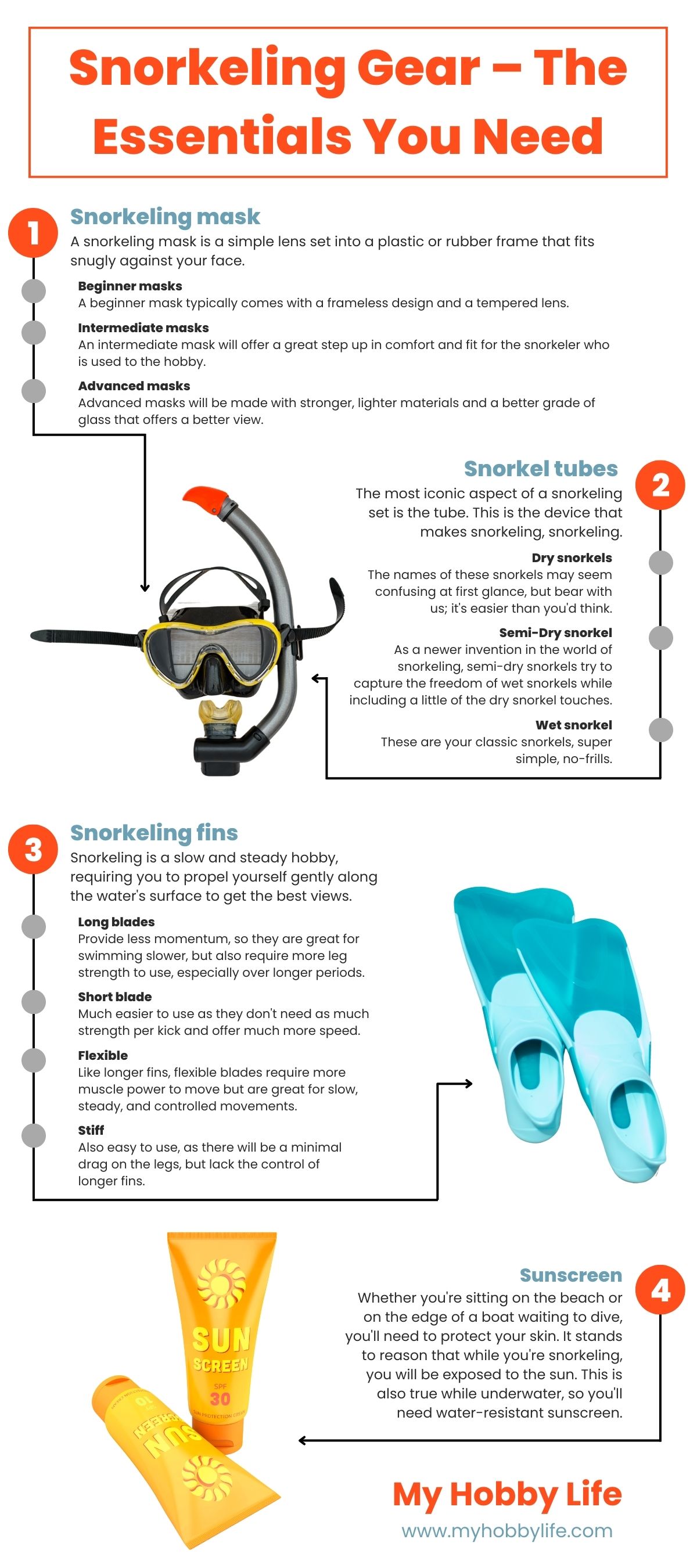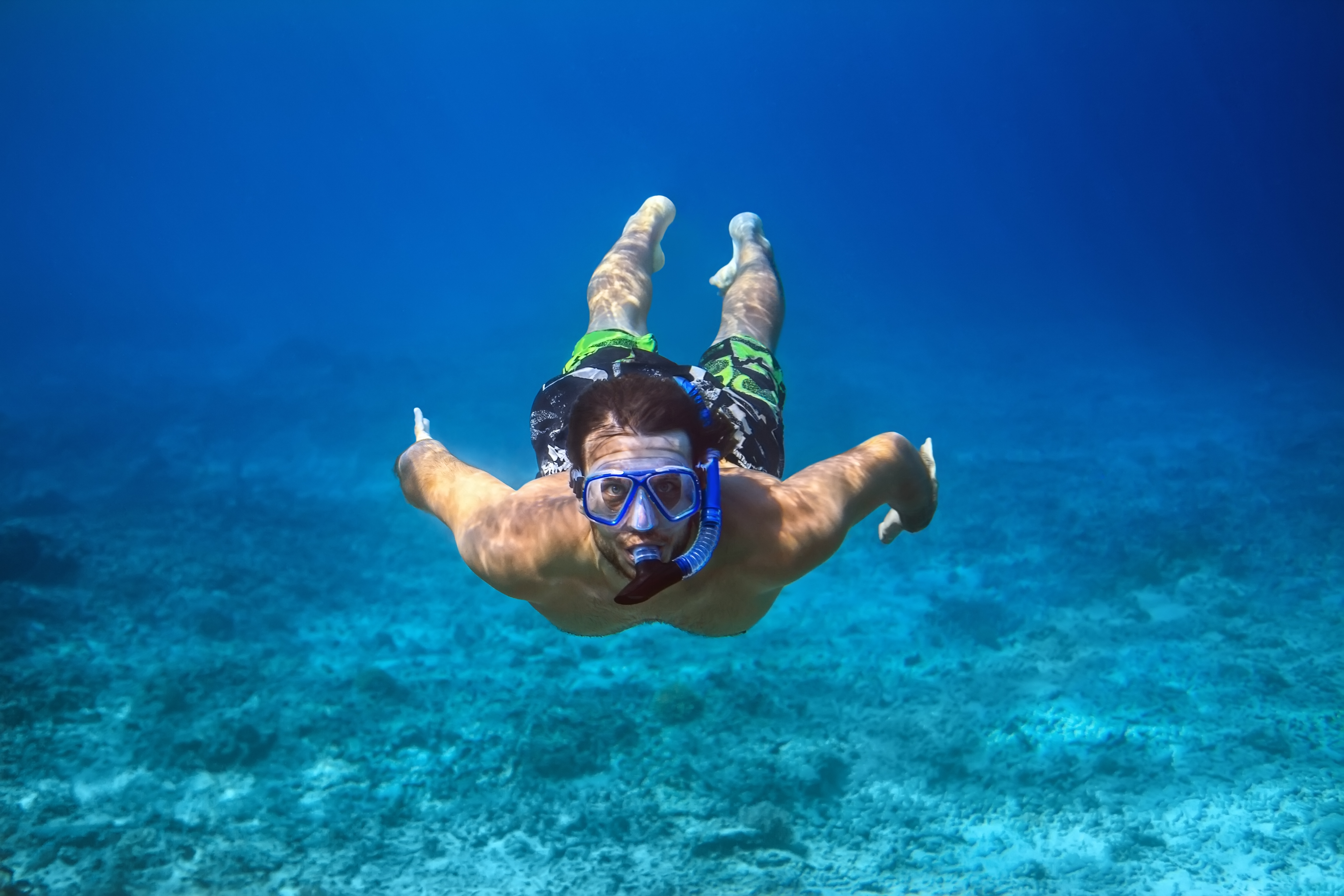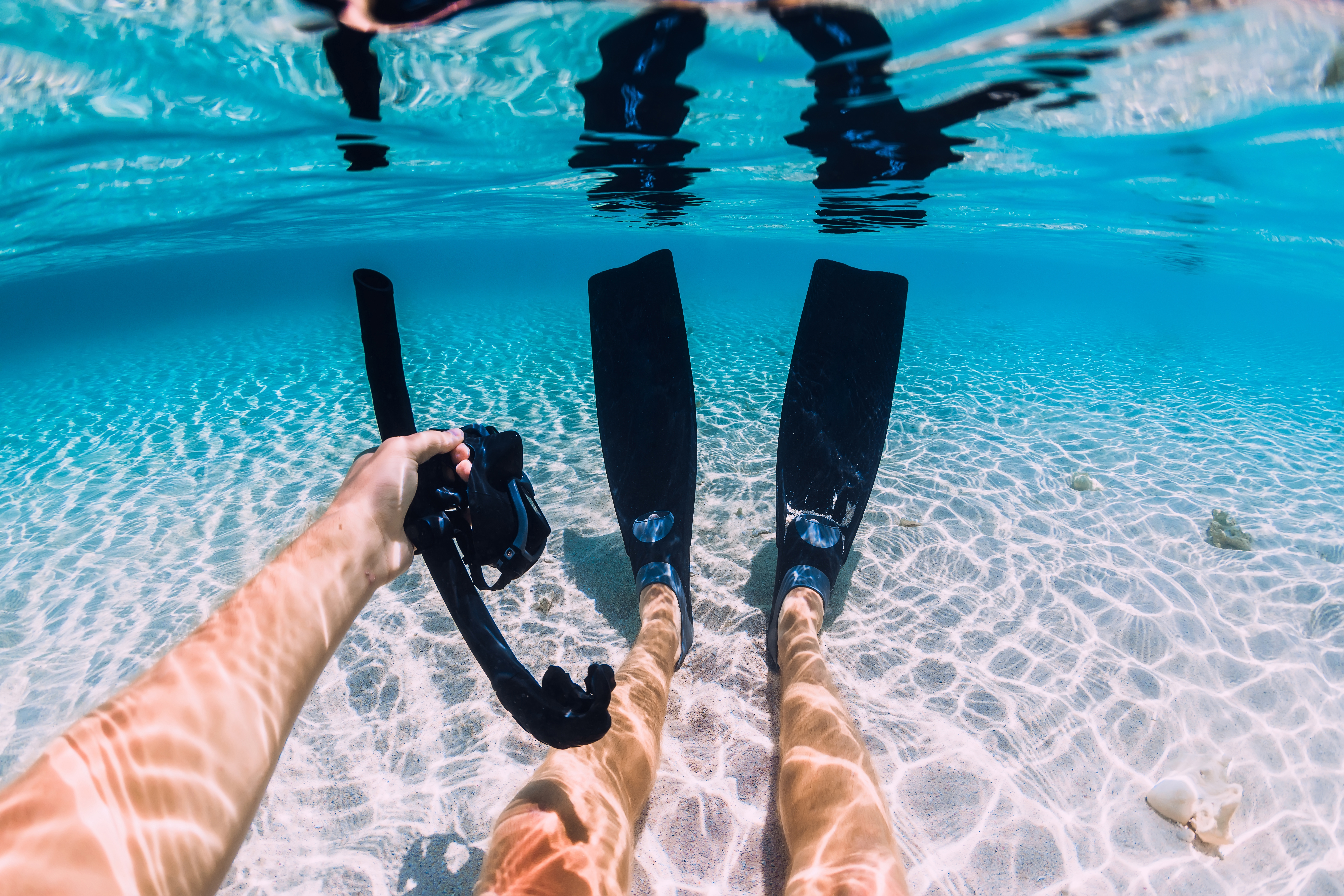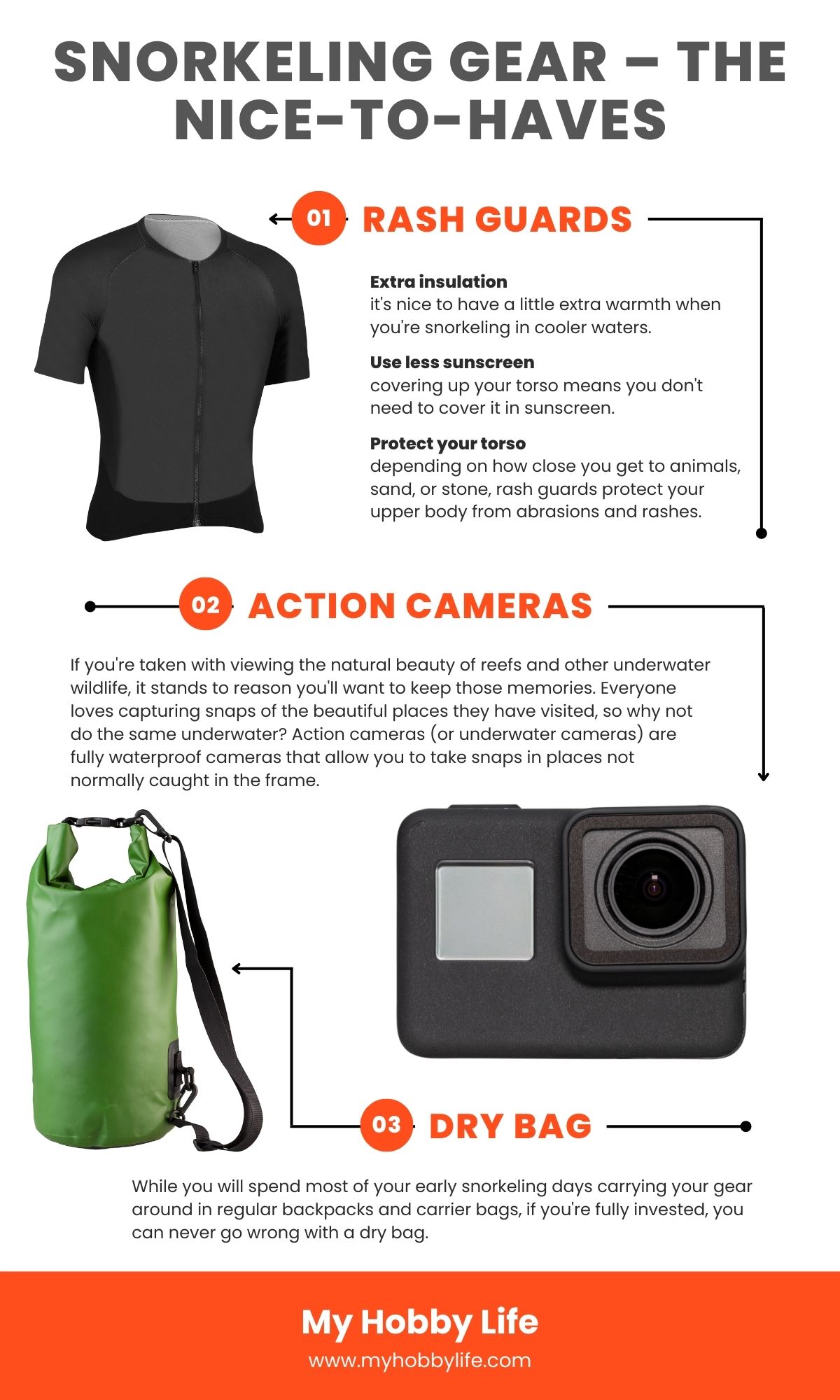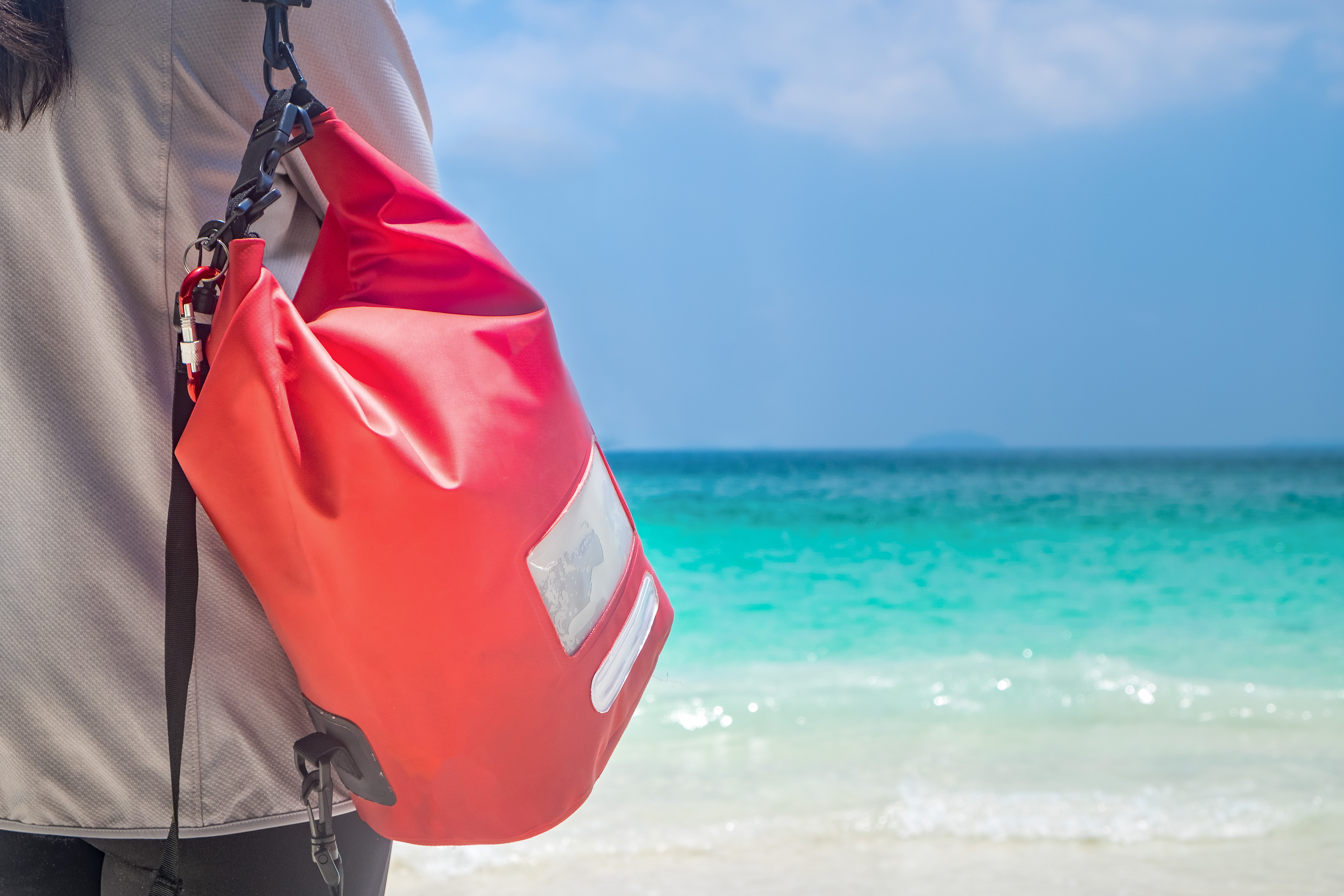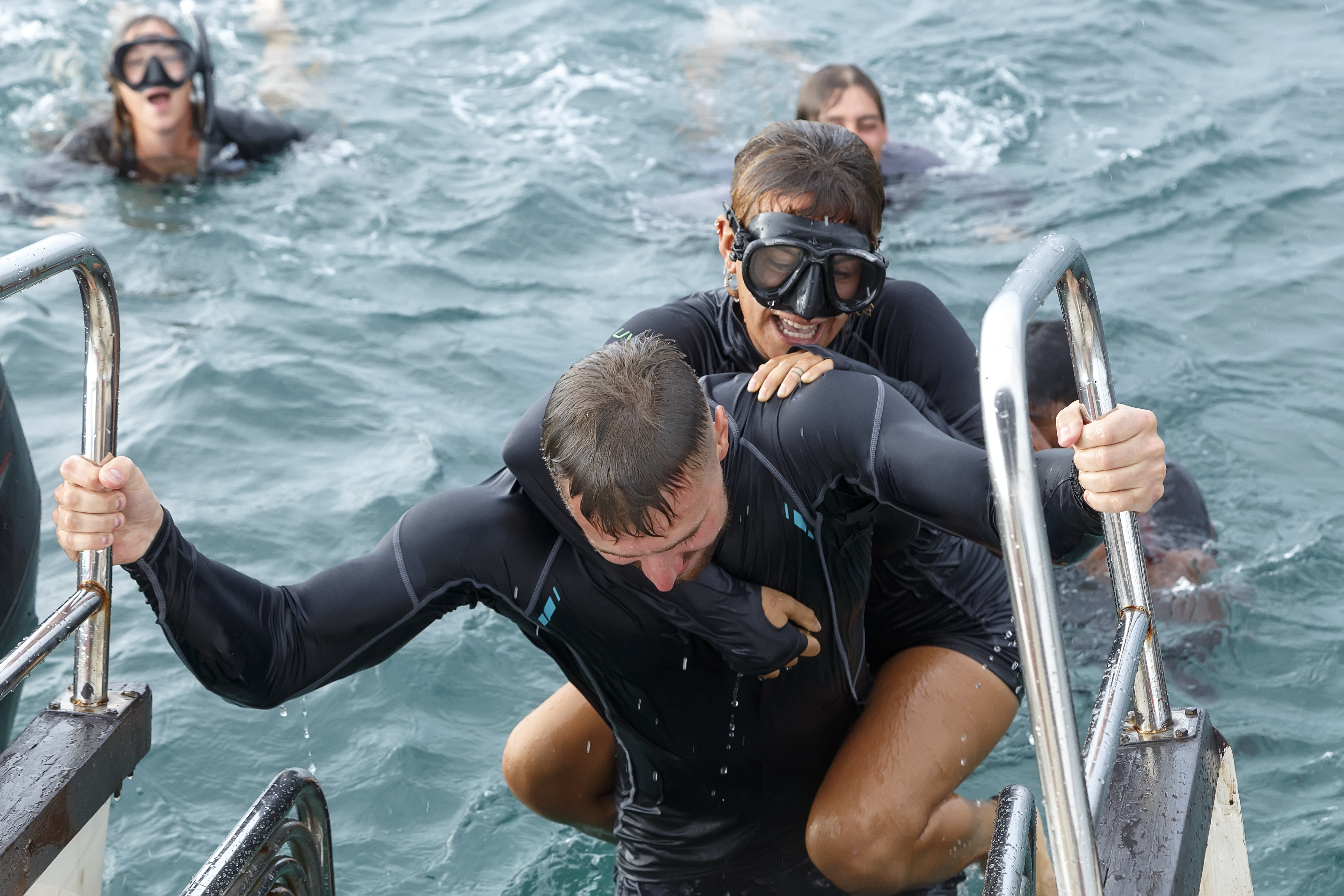If you’re the adventurous type and love all things aquatic, snorkeling might be the ideal hobby for you. It’s an activity any individual can perform—you don’t need a license or heavy equipment to snorkel underwater. Instead, you just need a few essentials to enjoy close views of marine life and underwater mountains.
Imagine being able to explore a completely different world full of life. The endless views and colors on coral reefs have to be an unforgettable experience. In destinations with idyllic and tropical beaches, you’ll have something fun to do. And if you manage to find clear water, the hobby of snorkeling can help you create memories of a lifetime.
Getting started requires some upfront investment, mainly in snorkeling gear. The gear helps you breathe and swim as you immerse yourself in the water. Many different companies sell snorkeling gear, which creates confusion among hobbyists. Which is the best snorkeling gear brand? What do you consider when buying snorkeling gear? What items make up the core of snorkeling gear?
In this post, we’ll tell you everything you need to identify the right gear for your snorkeling hobby. But first, let’s take a closer look at why snorkeling makes for a great hobby.
Why Snorkeling Is a Great Hobby
Aside from all the wonders you will experience during your snorkeling hours, the act of snorkeling itself has many great points that make it a great hobby. Aside from the beautiful blue views, snorkeling also:
1. It gets you into the great outdoors
Naturally, snorkeling is not a hobby you can perform from the comfort of your living room. Whether you’re snorkeling in a diving center or a natural reef, you’ll have to get out and get there to do it.
It gives you a great excuse to get abroad to beautiful seaside snorkeling locations or just out to any nearby lake or river you know of. Planning a trip around your snorkeling plans is a great way to get out and see some unusual sights not found on an average tour.
2. It gives you some alone time
The isolation of snorkeling is an experience held dear to many avid snorkelers. While groups of friends or family enjoy snorkeling as a hobby, you’re as good as alone while you’re under the water. If you love a bit of peace and quiet while taking in stunning views, there are few better hobbies than snorkeling.
3. It keeps you fit and healthy
Swimming is regarded as one of the most intensive forms of exercise. This is because it puts your whole body in motion, making each limb simultaneously responsible for movement. Snorkeling depends entirely on the same muscles as swimming, only with the added benefit of not being as intensive. When you snorkel, it’s best done slowly, meaning you can take time and relax, even while burning extra calories.
4. It is more affordable than you think
Getting prepared for most hobbies is an expensive task, but with snorkeling, you’ll be surprised at how little you’ll spend. All you need to get yourself ready to snorkel is a bathing suit (available anywhere, even in your local supermarket) and a snorkeling set. A decent snorkeling set will cost you around $40-50, and you’re all set.
Snorkeling Gear – The Essentials You Need
So, if snorkeling is grasping you as the next big thing in your life, then let’s look at what you’ll need. Fortunately, you can get yourself set up to snorkel with only a handful of items: a mask, snorkel tube, fins, and (most importantly) sunscreen.
There are a few extra pieces of equipment you may want to deck yourself with if you’ve taken to snorkeling in a big way, but for now, let’s look at these essentials.
Snorkeling mask (beginner, intermediate, advanced)
A snorkeling mask is a simple lens set into a plastic or rubber frame that fits snugly against your face. It covers your eyes and nose, keeping them free of water and giving you great views of where you’re swimming. There are three types of snorkeling masks based on your skill and comfort level, which also vary in cost.
Beginner masks
A beginner mask typically comes with a frameless design and a tempered lens. They will be the cheapest option, so they’ll likely be susceptible to a little wear and tear if handled roughly, but they are not painful to replace.
As there is no rigid frame, it helps beginners become used to the pressure of a facemask while providing a good, tight fit. Cressi F1 is a good option for new snorkelers, and so is the Seac Giglio by Seac Sub Italy. Both masks are ideal for delicate faces and extremely comfortable to wear. You can also get something basic like the Cozumel Adult Snorkeling Mask, but the latter two are ideal for snorkeling activities.
Intermediate masks
An intermediate mask will offer a great step up in comfort and fit for the snorkeler who is used to the hobby. Usually costing around $100, an intermediate mask will offer more comfort and stability than a beginner mask.
These tend to be built with a more solid frame, which is easier to handle if you’re already used to having a mask on. The better-tempered glass fills the frames, offering a greater degree of visibility and peace of mind. These masks are much better at taking a beating, which you’d hope for the higher price tag.
SCUBAPRO Solo is our top pick for intermediate snorkeling masks. But we also like the Tidal Mask with advanced anti-fog technology and Atomic Sub Frame. If $100 is a bit over your budget, there’s also the Cressi Panoramic Wide View Mask that does the job well.
Advanced masks
Advanced masks will be made with stronger, lighter materials and a better grade of glass that offers a better view. While there’s not much difference between intermediate and advanced masks on a structural level, the higher price tag makes them an ideal investment for an avid snorkeler. It may not seem like much to an outsider, but when you’ve put in your hours under the waves, you’re bound to see a world of difference.
If you are a person who requires glasses, you might think that snorkeling is not an option. Unfortunately, the design and nature of a traditional snorkeling mask are incompatible with regular glasses. You can still pursue your dreams, though, as there is an option for prescription masks. They definitely will be a costly option, but you can find masks that offer drop-in lenses that allow the use of prescription lenses. This way, even if you can’t go anywhere without your specs, you’ll still be able to enjoy the wonders of the sea.
In this category, masks like the Ocean Reef Neptune Space GDivers and the Kraken Aquatics Dive Snorkel Mask make the list. Both of these masks are used by professionals—you can revisit them if you decide to pursue snorkeling professionally in the future. For now, let’s stick with the basics.
Snorkel tubes
The most iconic aspect of a snorkeling set is the tube. This is the device that makes snorkeling, snorkeling. For those who need a refresher, a snorkel tube is a tube held in the mouth. It pokes out of the water to allow a snorkeler to breathe. Thanks to nose-covering, the only breathing method is through your mouth, so a snorkeling tube has to be lightweight, open, and easy to breathe through.
Like with masks, snorkeling tubes come in three categories: Dry, semi-dry, and wet snorkels, so let’s see what the difference is and what’s the best fit for you.
Dry snorkels
The names of these snorkels may seem confusing at first glance, but bear with us; it’s easier than you’d think. The purpose of a dry snorkel is that it is a tube with a one-way valve. Rather than being entirely open, a dry snorkel will only open while you breathe, keeping water out the rest of the time. Hence the name “dry snorkel,” as the tube will not suffer water ingress.
Unlike with masks, there’s no need to advance through the types of snorkels, so if you start with dry snorkels and find them comfortable, stick with them! These are the best types of snorkels for beginners, as they allow you the peace of mind that you will not have to deal with water. They give beginners the confidence to get used to breathing in the way snorkeling requires, easing the learning curve.
Oceanic Ultra-Dry 2 is an excellent dry snorkel for beginners. It comes with a comfortable mouthpiece and is also lightweight. But if it’s out of your range, you can consider the Phantom Aquatics dry snorkel or the Cressi Alpha Ultra Dry. Both are available at a good price and offer all the core functions you’ll need.
The only issue with a dry snorkel is that the valve means there will always be a small pocket of air trapped inside it. This is only a minor issue, but it causes buoyancy, so anyone looking to go deeper will have to get used to compensating for the upward pull.
Semi-Dry snorkel
As a newer invention in the world of snorkeling, semi-dry snorkels try to capture the freedom of wet snorkels while including a little of the dry snorkel touches. These snorkels don’t have a valve and are largely open throughout. What makes them different is that they feature a splash guard on the opening to prevent much of the outside water from getting in. They are nowhere near as effective as dry snorkels – water will assuredly get in during any trip – but they walk a line between the two types.
Semi-dry snorkels are a great intermediary class for someone looking to either change up to wet or dry snorkels. They are ideal for total freedom of movement but a little protection from water ingress. They require the same breathing awareness as a wet snorkel but still offer some protection, making them great for intermediate snorkelers. Lacking the valve also means that, like wet snorkels, these won’t offer any buoyancy resistance.
The ScubaPro Nexus is top of the class for us in this snorkel category, but others like Mares Marlin and Comocean also fit the purpose of hobbyist snorkelers.
Wet snorkel
These are your classic snorkels, super simple, no-frills. A wet snorkel is simply a tube – nothing more, nothing less – that is held in your mouth and allows you to breathe. There are no protections from letting water in, so understanding the breathing methods for snorkeling is vital if you don’t want a lungful of water.
In a world where dry and semi-dry snorkels exist, the only people who use wet snorkels are either in the old school or want a classic feel to their expeditions. There is no reason to use these other than desire, as they won’t make it easy to learn how to snorkel. There is nothing wrong with doing so, however, so if you fancy the classic challenge of snorkeling, then go ahead.
The Cressi Corsica Snorkel is a good option for advanced snorkelers, and so is the FINIS Freestyle snorkel (those looking for a non-black snorkel are likely to cherish it).
Snorkeling fins
Snorkeling is a slow and steady hobby, requiring you to propel yourself gently along the water’s surface to get the best views. While you will use your arms for buoyancy and directional movements, most of your forward momentum will come from your legs. As such, you will find little of your movement being made by moving your arms.
To ensure the most energy-efficient and swiftest movement, snorkelers will use fins to help boost each kick. Fins are worn strapped against your bare feet and elongate so that more power is added each time you move your legs.
Fins can be found in the following types:
- Long blades – provide less momentum, so they are great for swimming slower, but also require more leg strength to use, especially over longer periods. Cressi’s CLIO Long Bade and Pro Star Swim fins are great choices.
- Short blade – much easier to use as they don’t need as much strength per kick and offer much more speed. They are great for learning how to use fins. Beginners could start with Seac Vela OH or Aqualine short fins, which have an adjustable strap.
- Flexible – like longer fins, flexible blades require more muscle power to move but are great for slow, steady, and controlled movements. While not ideal for beginners, the U.S. Divers Proflex FX Fin is one of the options if you’re interested.
- Stiff – also easy to use, as there will be a minimal drag on the legs, but lack the control of longer fins.
Fins also come in multiple sizes to fit your feet. Many come with an adjustable heel strap, so they can be adjusted to fit your feet snugly, while others need to be bought in the correct size. After all, you don’t want it coming loose mid-swim or being uncomfortably tight against your feet.
Sunscreen
Whether you’re sitting on the beach or on the edge of a boat waiting to dive, you’ll need to protect your skin. It stands to reason that while you’re snorkeling, you will be exposed to the sun. This is also true while underwater, so you’ll need water-resistant sunscreen.
However, when you’re snorkeling, you’ll likely be near wildlife – be it a coral reef, schools of fish, or wild animals – and you will need to consider what you use. Make sure your sunscreen is water friendly – or “reef safe” – like the Sun Bum Oxybenzone Moisturizing cream or Thinksport SPF 50+ Mineral Sunscreen. You don’t want chemicals in it to wash off and contaminate the wildlife you’re viewing. For the maximum effect, make sure to apply the sunscreen 10-15 minutes before going into the water—you want to give it enough time to absorb into your skin.
Snorkeling gear – The nice-to-haves
The following items are not 100% necessary on every snorkeling trip, but they’re nice additions for the hardcore hobbyist. If you’re fully invested in snorkeling and want to make the most of your trips, why not consider investing in the following:
Rash guards
These are a special kind of shirt worn while you’re under the water. They’re form-fitting and offer a few benefits, such as:
- Extra insulation – it’s nice to have a little extra warmth when you’re snorkeling in cooler waters. Rash guards keep in body heat better than nothing, making your swims much more comfortable. O’Neill Wetsuits has options for both women and men.
- Use less sunscreen – covering up your torso means you don’t need to cover it in sunscreen. This will allow you only to have to focus on your arms and legs when protecting from errant UV.
- Protect your torso – depending on how close you get to animals, sand, or stone, rash guards protect your upper body from abrasions and rashes (as the name suggests). The Volcom Men’s Lido Short Sleeve fits this description quite well.
Action cameras
If you’re taken with viewing the natural beauty of reefs and other underwater wildlife, it stands to reason you’ll want to keep those memories. Everyone loves capturing snaps of the beautiful places they have visited, so why not do the same underwater? Action cameras (or underwater cameras) are fully waterproof cameras that allow you to take snaps in places not normally caught in the frame.
If splashing out on a whole underwater camera kit is too expensive, GoPro offers a range of water-resistant and –proof cameras like the Hero11 Black and Hero9 Black. Kodak also offers it in the shape of PIXPRO WPZ2, but it’s not as robust as GoPro’s range. These cameras can be used in and out of the water, helping you catch every minute of your snorkeling adventure.
Dry bag
While you will spend most of your early snorkeling days carrying your gear around in regular backpacks and carrier bags, if you’re fully invested, you can never go wrong with a dry bag.
Dry bags have two main functions – the first is to keep all your out-of-water gear (your dry clothes, wallets, phones, etc.) dry while you swim. They’re designed to be waterproof, not letting a drop of water in, no matter where you leave them. You can’t take them underwater with you, but while they’re on the beach or the boat, you can be sure your stuff will stay dry.
The second function is that if they keep water in your bag, they also keep it from getting out. When you’re done with your snorkeling for the day, putting your gear inside the bag will prevent the water on it from getting out. Dry bags like the Earth Pak Waterproof bag and Coastrait Outdoor Floating bag are ideal for lugging your gear to and from your trips, keeping your car and room dry even when wet.
Best snorkeling gear brands
You can buy snorkeling gear from a variety of sellers, but it’s best to purchase it from reputable brands. Here’s a complication of the most popular snorkeling gear brands in the market:
Cressi
Cressi has been around since the 1930s. Its products reach a global audience, but all the manufacturing is carried out in Genoa, Italy. Originality is the key focus of the snorkeling gear maker, with its products reflecting that mantra through their unique functions and design. Today, Cressi makes gear for a variety of activities, including snorkeling, scuba diving, and more. You can easily find all the items that should be present in your snorkeling gear on Cressi’s website. The quality of the products indicates that the company has been catering to snorkeling enthusiasts for a long period.
Aqua Lung
Aqua Lung has managed to expand its product line over the years. Today, the company sells everything a snorkeler might need, from high-quality masks to various fins, plus a lot more. The brand is also a leading global designer and supplier of water sports gear and dive equipment. It has a deep commitment to research, quality, and testing, which has enabled it to set industry standards for users in comfort, design, safety, and technology.
TUSA
TUSA is known for ultra-soft silicone and mask seals. The brand thrives due to the maneuverability of its gear, especially the snorkel. The product comes with a soft silicone between the mouthpiece and the plastic of the snorkel. Many people find it more comfortable and softer than other brands.
SEAC
Founded in 1971, SEAC is a leading brand that offers snorkeling gear under its Seac Vela line. Its most famous product is fins, which are flexible and short to help optimize the user’s performance. SEAC’s fin also includes a supple blade, which the customer can wear barefoot. SEAC is based in Italy, like Cressi, where all its products are rigorously tested to ensure the customer receives the highest quality.
Oceanic
Oceanic creates accessible, modern, and simple-to-use snorkeling equipment that helps users take advantage of what matters the most; appreciate marine life and explore the underwater world. The founder—Bob Hollis—is committed to making reliable snorkeling equipment that anyone, anywhere, can enjoy. Day in and day out, the brand is thinking, testing, developing, and innovating its products to improve snorkeling and diving.
Kraken Aquatics
Based in Heber Valley, Utah, Kraken Aquatics is the brainchild of James Rail. The American brand focuses on providing hobbyist snorkelers with high-quality gear so they can focus on having on. It works hard to ensure you receive the right items to suit your needs, with great customer service so you don’t get stuck at any point. The brand regularly releases new snorkels, masks, and fins, so you are sure to find everything you need to get started with snorkeling.
Why buy instead of renting snorkeling gear?
Some of you may think that snorkeling is a great hobby while you’re away on vacation, but why bother buying it when you can rent it? Sure, most holiday retreats and outdoor adventure companies will offer rental snorkeling gear, which will cost less in the short term than buying your own. However, buying your gear is always preferable, and here’s why.
- You aren’t the first person to use that gear – every rental company needs to follow the rules about disinfecting rental gear to make it safe for the next user, but do you want to trust that? You never know who came before and how well looked after it was. Ultimately, it’s just a safer bet to know the gear has only had one use – you – and that it has received the respect it deserves.
- It won’t be the best quality gear – even the most professional outdoor companies will invest in good gear, but they have to keep it affordable. You’ll never get the best gear for your buck from a rental place, and as mentioned above, it will suffer the wear and tear of multiple uses by multiple users. They will be broken in – and potentially broken – pieces of gear.
- You will be limited in your practice time – you’ll only be able to practice when and where you can rent gear, and it will rarely be the same gear twice. When you own your snorkeling gear, you’re free to use it whenever, wherever. You’ll get to know your equipment, how it works best and how to get around its quirks. You’ll also only be limited in using them where snorkeling is allowed, so whether it’s in a river, the sea, or just the hotel pool, you’ll be ready to go at a moment’s notice.
Can I snorkel anywhere?
Yes, as long as it’s safe to do so. However, snorkeling conjures visuals of tropical locations and coral reefs for most people. Know that the majority of the ocean is quite empty. To enjoy views underwater, you can visit one of the top snorkeling destinations in the US or abroad.
| Top Snorkeling Destinations In The US | Top Snorkeling Destinations Outside the US |
| Dry Tortugas, Florida Keys | Koh Tao, Thailand |
| Catalina Island, California | Punta Mita, Mexico |
| Papalaua Wayside Park, Maui | Nusa Lembongan, Indonesia |
| St. Croix, US Virgin Islands | Sharm El Sheikh, Egypt |
| Honolulu, Hawaii | Nusa Lembongan, Indonesia |
| Navarre Beach — Florida | Great Barrier Reef, Australia |
Do snorkels allow people to fully breathe underwater?
Snorkels are different from scuba diving equipment—they do not allow you to breathe deep. Instead, you must use the breathing tube to exchange air at the water’s surface. If the snorkel is submerged below the water line, you will not be able to breathe through the tube.
With the right breathing technique, you can stay underwater for 30 seconds to 1 minute while snorkeling. And you can extend this time to 2 minutes with the right snorkeling training and breathing exercises.
Conclusion
The core snorkeling gear includes the mask, snorkel, fin, and sunscreen, while the nice-to-haves include the rash guard and dry bag. Action cameras are a must once you get accustomed to the activity because the beauty of the snorkeling hobby is to record footage while cruising under the sea. Imagine enjoying leisure while documenting your hobby to share with friends and family. It’s something no one would want to miss out on.
As for your snorkeling gear, you’ll find different options for each item. Masks, for example, also come in full-face varieties besides the three we’ve shared. But we recommend sticking with options below $50 when you’re just starting (minus the sunscreen because it shouldn’t cost more than $5-$10), then work towards the more advanced masks and snorkels. Once you have all the items mentioned in this guide, you’ll be ready to snorkel among tropical marine life, coral reefs, and even icebergs.
